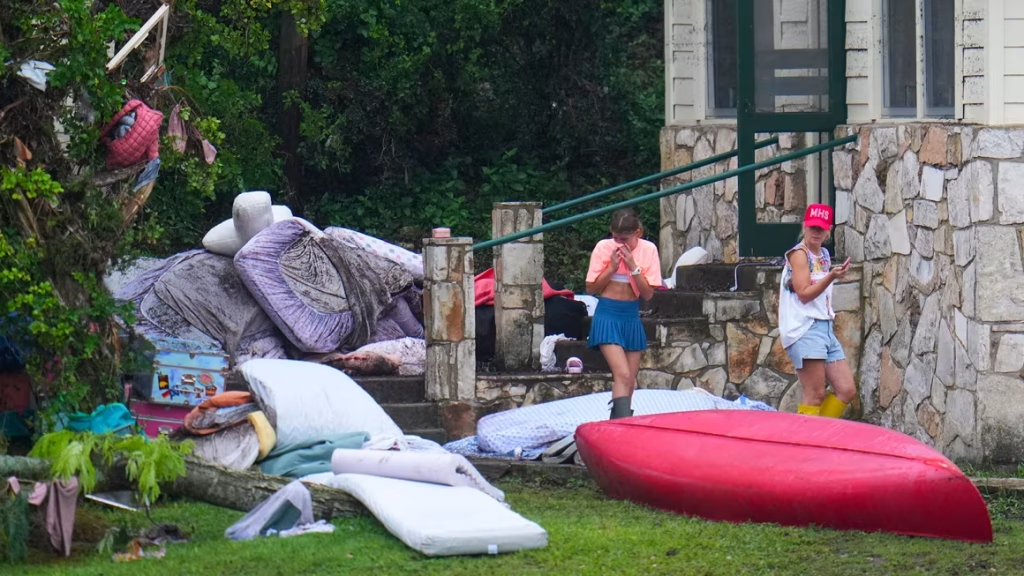State inspection two days before deadly floods found Camp Mystic had emergency plan in place

Two days before deadly Central Texas floods killed at least 27 people at Camp Mystic, a state inspector visited the youth camp and certified that it had an emergency plan in place and that its cabins and other buildings were safe, records obtained by CNN show.
The inspector with the Texas Department of State Health Services confirmed on July 2 that the Christian camp on the banks of the Guadalupe River had a state-mandated plan “for emergency shelter and for evacuation” in case of a disaster.
In the wake of the devastation at the nearly 100-year-old summer camp, the state inspection report raises new questions about whether that emergency plan was adequate and how closely it was followed.
The state health department does not maintain copies of youth camp emergency plans, but they are reviewed during each annual inspection, said Lara Anton, a spokesperson for the agency. Plans for disasters “would include flooding,” she noted.
Leaders at Camp Mystic did not respond to phone calls and an email from CNN about the disaster plan.
“Our hearts are broken alongside our families that are enduring this unimaginable tragedy,” a statement on the camp website read. “We have been in communication with local and state authorities who are tirelessly deploying extensive resources to search for our missing girls.”
Through a public records request, CNN obtained the most recent four years of annual inspections, which were first reported by KSAT.
The inspections evaluated Camp Mystic on dozens of different safety and compliance rules on topics from water supply to bunk bed guardrails. Those also included state regulations requiring youth camps to formulate a written emergency plan “in case of a disaster, serious accident, epidemic, or fatality,” and post it at a camp’s office and “in each permanent and semi-permanent occupied building.”
Staff and volunteers must be made aware of the plan during trainings, and campers should be instructed about what to do in the event of a disaster or “the need to evacuate.”
The state inspector who visited Camp Mystic last week reported that it was complying with those requirements, confirming that a written emergency plan had been posted at the camp and staff and volunteers were made aware of it. The inspector also found that none of the camp’s buildings or structures presented a safety hazard, all buildings complied with applicable building and safety codes, and all permanent structures were in “good repair.”
The camp passed the inspection with “no deficiency/violation,” according to the records.
The previous annual inspections over the last four years also found that Camp Mystic was following the rules on emergency planning. The camp had been hit with a few violations in recent years related to food preparation and insufficient documentation of experience or training for riflery and equine instructors, the records show.
There were 386 campers and 64 staff members staying at the camp’s Guadalupe River section, where the worst of the flooding happened, as well as 171 campers and 44 staff at the nearby Cypress Lake section of the camp, according to the July 2 inspection.
When the floodwaters hit the camp in the early hours of July 4, counselors and staff helped young campers climb a hill to evacuate to higher ground, according to witness accounts.
But waters rose so quickly that some campers and counselors, especially those in cabins on lower ground closest to the river, weren’t able to make it out in time.
Caroline Cutrona, a Camp Mystic counselor, told CNN that a power outage around 4 a.m. that morning meant that the camp’s loudspeaker public address system wasn’t working, and that she never received cell phone alerts about the flash flooding because counselors and campers weren’t allowed to keep their phones with them.
It’s unclear whether the camp’s emergency plan accounted for the communication breakdowns.
Some of the cabins campers were staying in are located in the Guadalupe River’s “regulatory floodways” – the areas that flood first and are most dangerous – according to federal flood maps. Other cabins are located in an area that the federal government has determined has a 1% chance of flooding each year.
But the Texas regulations for youth camps don’t say anything about flood zones, and the state records don’t show the annual inspections of Camp Mystic taking that into account.


